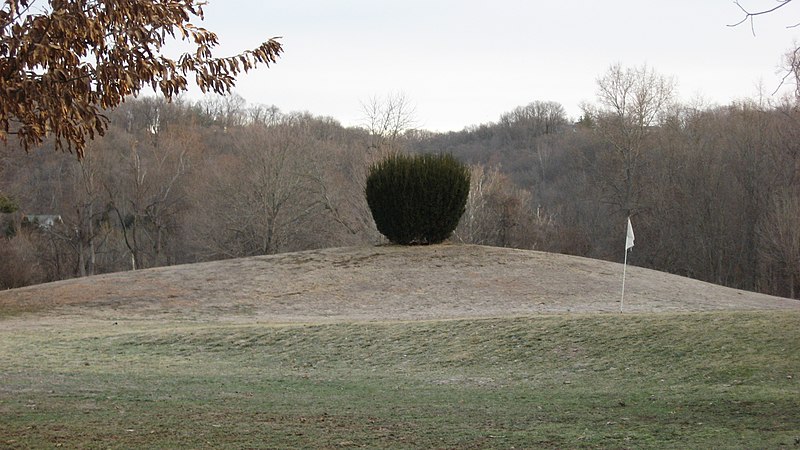 |
| Emily and the Fernbank Indian |
In addition to that bit of tiny trivia, in this same park stands the J. Fitzhugh Thornton Memorial. The statue, locally called "Tecumseh" is also known as the Sayler Park Indian, the Fernbank Indian and its catalog name, Indian Chief No. 53. Just like the saga of the American Indian, this effigy has an unusual history which evokes a paradox of civic pride in Sayler Park's modern residents.
Dedicated 100 years ago on January 15, 1912, the memorial was given by Eliza Thornton in memory of her husband John Fitzhugh Thornton who died in 1907. Thornton was an early and prominent resident of the Village of Fernbank, which became part of Sayler Park when the area was incorporated into the city in 1912. I'm not sure why an Indian image was selected by Eliza to memorialize her dead husband. Maybe he just liked Indian history like me. Please make a note of that.
 |
| civic pride |
In the Flood of 1937, the statue was partially submerged and damaged. In 1940 it was hit by a car and then sold as scrap to an antique dealer for $10 before the community raised funds to repair it and bring it back. It was again hit and damaged by a car in 1965 and repaired. Full disclosure, I am not sure if either of these cars were Pontiac's but it made an amusing title for the post. The Fernbank Indian was extensively repaired yet again in 2002 and re-cast in bronze. The "new" statue was re-erected in late 2002 and re-dedicated in 2003. Technically this statue is a bronze reproduction of the cast iron/zinc1912 original.
 |
| Indian Chief No. 53 |
 |
| Short Woods Mound |
The Short Woods Mound, now on the edge of the local golf course measures 38 feet high by 150 feet wide. It has been excavated and radiocarbon dated to 800 BCE.
Another mound from that era known as the Story Mound is on the property of Sayler Park Elementary. Both mounds were listed on the National Register of Historic Places in the mid 1970's.
I wish I had better pictures of the statue. The sun was not cooperating during my visit in the Summer of 2011 and some of the pictures were lost due to a corrupt memory card. More full disclosure...a geocache brought me here!